
Frontiers in Electronics
Scope & Guideline
Transforming Knowledge into Technological Advancement
Introduction
Aims and Scopes
- Power Electronics and Energy Systems:
Research in this area focuses on the design, analysis, and integration of power electronic systems, including converters and renewable energy technologies. This includes advances in high-voltage direct current (HVDC) systems and energy storage solutions. - Wearable and Bioelectronics:
The journal features studies on flexible and wearable electronics, emphasizing their applications in health monitoring, bio-sensing, and human-machine interaction. This area explores novel materials and device architectures to enhance functionality and comfort. - Neuromorphic and Memristive Computing:
This scope includes research on memristive devices and their applications in neuromorphic computing, which mimics neural architectures for advanced processing capabilities. This area is significant for developing efficient machine learning and AI systems. - Electromagnetic Compatibility and Signal Integrity:
Studies in this domain address challenges related to electromagnetic interference (EMI) and compatibility in electronic systems, focusing on mitigation techniques and design strategies to ensure reliable operation. - Advanced Materials for Electronics:
The journal also covers the development and application of emerging materials, such as 2D materials, organic semiconductors, and biodegradable materials, aimed at enhancing device performance and sustainability.
Trending and Emerging
- Integration of AI and Machine Learning in Electronics:
An increasing number of papers explore the integration of AI and machine learning techniques in electronic systems, particularly in areas like predictive maintenance, smart grid management, and real-time data processing. - Energy Harvesting and Efficiency:
Research on energy harvesting technologies, particularly for IoT and wearable devices, is gaining momentum. This trend highlights the need for sustainable energy solutions in the face of growing electronic device usage. - Flexible and Biodegradable Electronics:
The development of flexible and biodegradable electronic materials is rapidly emerging as a key area of interest, driven by the demand for sustainable electronics that minimize environmental impact. - Neuroelectronics and Brain-Machine Interfaces:
The intersection of neuroscience and electronics is becoming increasingly prominent, with innovative research focusing on devices that interface directly with neural systems for applications in neurostimulation and prosthetics. - Smart and Connected Health Technologies:
There is a growing trend towards the development of smart health monitoring systems that leverage wearable technologies, emphasizing the importance of real-time health data collection and analysis for personalized medicine.
Declining or Waning
- Traditional Semiconductor Devices:
Research on conventional semiconductor technologies, particularly silicon-based devices, appears to be waning. This may be due to the increasing interest in alternative materials and architectures that promise better performance and energy efficiency. - Analog Circuit Design:
While still relevant, the focus on traditional analog circuit design is becoming less pronounced as digital and mixed-signal approaches gain traction in electronics, especially with the rise of digital signal processing and integrated systems. - Basic Electronic Components and Passive Devices:
There is a noticeable decrease in studies specifically focused on passive components such as resistors and capacitors. This may be attributed to the trend towards integrated solutions that combine multiple functionalities into single devices.
Similar Journals

npj Flexible Electronics
Unveiling the Potential of Flexible Electronicsnpj Flexible Electronics, published by NATURE PORTFOLIO, is a premier open-access journal dedicated to the rapidly advancing field of flexible electronics. Since its inception in 2017, the journal has gained significant recognition, boasting impressive rankings as a Q1 journal in both Electrical and Electronic Engineering and Materials Science based on the 2023 metrics. With its E-ISSN 2397-4621, the journal serves as an essential platform for researchers, professionals, and students alike, facilitating the dissemination of high-quality research articles, reviews, and insights that drive innovation across multidisciplinary applications. Operating from its base in Berlin, Germany, and characterized by a robust impact within the academic community, npj Flexible Electronics plays a critical role in shaping the future of electronic materials and devices. The journal offers comprehensive open access options, ensuring that cutting-edge research is readily available and widely disseminated, fostering collaboration and engagement within the global research community.
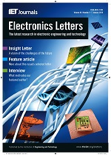
ELECTRONICS LETTERS
Pioneering Open Access for Global Impact.ELECTRONICS LETTERS, published by WILEY, is a leading peer-reviewed journal dedicated to the field of Electrical and Electronic Engineering. With a rich history dating back to 1965, this journal serves as a prominent platform for disseminating novel research and innovations in electronics, covering topics such as circuit design, telecommunications, and signal processing. In 2021, the journal transitioned to an Open Access format, ensuring that cutting-edge research is freely accessible to a global audience, thereby enhancing its impact and outreach. The journal currently holds a Q3 quartile ranking in its category, reflecting its solid position among its peers, and ranks #451 out of 797 in Scopus for Electrical and Electronic Engineering, placing it within the 43rd percentile. ELECTRONICS LETTERS is essential for researchers, professionals, and students looking to stay abreast of the latest developments and contribute to advancements in the field, fostering collaboration and knowledge sharing in a rapidly evolving landscape.
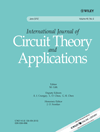
INTERNATIONAL JOURNAL OF CIRCUIT THEORY AND APPLICATIONS
Advancing Circuit Theory for Tomorrow's InnovationsINTERNATIONAL JOURNAL OF CIRCUIT THEORY AND APPLICATIONS serves as a premier platform for researchers and practitioners in the fields of applied mathematics, electrical and electronic engineering, and materials science. Published by Wiley, this esteemed journal, with an ISSN of 0098-9886 and an E-ISSN of 1097-007X, has been in circulation since 1973, providing insightful contributions and advanced research findings through 2024. It holds a commendable reputation across multiple disciplines, reflected in its 2023 ranking in the Q3 category across applied mathematics, computer science applications, and electronic materials. Researchers engaging with this journal can expect rigorous peer-reviewed articles that address both theoretical and practical implications, thereby fostering advancements in circuit theory and its multitude of applications. While the journal is not open access, it continues to play a significant role in disseminating high-caliber research crucial for scholars and professionals alike.

INFORMACIJE MIDEM-JOURNAL OF MICROELECTRONICS ELECTRONIC COMPONENTS AND MATERIALS
Pioneering Insights in Electronic Components and MicroelectronicsINFORMACIJE MIDEM - JOURNAL OF MICROELECTRONICS ELECTRONIC COMPONENTS AND MATERIALS is a prominent open-access journal published by SOC MICROELECTRONICS, ELECTRON COMPONENTS MATERIALS-MIDEM in Slovenia, dedicated to advancing knowledge in the fields of microelectronics, electronic components, and materials. Since its inception in 1988, the journal has provided a platform for groundbreaking research and innovations, ensuring that all published work is freely accessible to a global audience. With an impressive history of publication from 1996 to 2024, INFORMACIJE MIDEM is indexed in Scopus, holding respectable ranks in categories such as Electrical and Electronic Engineering (Rank #525/797, Percentile 34th) and Electronic, Optical, and Magnetic Materials (Rank #204/284, Percentile 28th). While currently classified in the Q4 quartile for the year 2023, the journal serves as an essential resource for researchers, professionals, and students seeking the latest developments in microelectronics and related fields, fostering a collaborative academic environment and contributing to the advancement of technology and materials science.
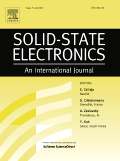
SOLID-STATE ELECTRONICS
Connecting Academia and Industry through Solid-State ResearchSOLID-STATE ELECTRONICS, published by Pergamon-Elsevier Science Ltd, is a highly regarded journal committed to advancing the field of solid-state physics and its applications. With an ISSN of 0038-1101 and an E-ISSN of 1879-2405, this journal has been a cornerstone of scholarly communication since its inception in 1960. Covering a rich spectrum of topics, it features in the Q3 category for Condensed Matter Physics, Electrical and Electronic Engineering, and Materials Science, reflecting its robust engagement in these critical fields. Despite not being an open-access journal, it provides valuable insights and research findings accessible to both academia and industry professionals, ensuring the dissemination of cutting-edge knowledge. With a strong focus on empirical research and theoretical developments, SOLID-STATE ELECTRONICS aims to bridge the gap between fundamental science and practical application, making it an essential resource for researchers, professionals, and students alike in the United Kingdom and beyond.
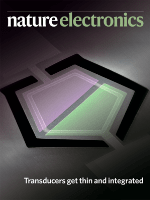
Nature Electronics
Connecting Ideas, Advancing TechnologiesNature Electronics is a premier journal in the field of Electrical and Electronic Engineering, published by NATURE PORTFOLIO. Established in 2018 and converging until 2024, it has swiftly positioned itself as a leading platform for groundbreaking research, holding a prestigious Q1 ranking in multiple categories including Electronic, Optical and Magnetic Materials, and Instrumentation according to the latest 2023 evaluations. The journal boasts an impressive Scopus ranking, securing the top position in Instrumentation and showcasing exceptional standings in both Electrical Engineering and Materials Science. With a commitment to disseminating high-quality research, Nature Electronics offers insightful access to the latest innovations and advancements in the electronics domain, making it an essential resource for researchers, professionals, and students alike. Engaging with this journal enables readers to stay at the forefront of technological progress and fosters discussion on the future of electronic materials and devices.

Journal of Electromagnetic Engineering and Science
Illuminating the Future of Electromagnetic EngineeringThe Journal of Electromagnetic Engineering and Science (ISSN: 2671-7255, E-ISSN: 2671-7263) is a premier Open Access journal published by the Korean Institute of Electromagnetic Engineering & Science. Since its establishment in 2001, it has been dedicated to advancing knowledge in the fields of Electrical Engineering, Electromagnetic Theory, and Communications, making significant contributions to both academia and industry. The journal holds an impressive Q2 quartile ranking in notable categories such as Computer Networks and Communications and Electrical and Electronic Engineering as of 2023, reflecting its robust scientific impact and reputation. It is indexed in Scopus, with commendable rankings in multiple fields, enhancing its visibility and reach among researchers. The journal's open-access model ensures that cutting-edge research is accessible to a global audience, fostering collaboration and innovation. Researchers, professionals, and students in the domain are encouraged to contribute and engage with high-quality articles that cover the latest advancements and trends in electromagnetic engineering and associated sciences.

SmartMat
Advancing the Future of Smart Materials.SmartMat is a cutting-edge, peer-reviewed academic journal published by WILEY, dedicated to the fields of Chemistry, Materials Science, and Mechanics of Materials. Launched in 2020, this Open Access journal aims to disseminate high-quality research and innovative findings that bridge these interdisciplinary areas. With an impressive impact factor reflecting its strong scholarly influence, SmartMat currently holds the prestigious Q1 category ranking in key domains such as Chemistry (miscellaneous), Materials Science (miscellaneous), and Mechanics of Materials, underscoring its relevance and importance in advancing material research. The journal is ranked among the top in its fields on Scopus, with 98th and 97th percentiles for Engineering and Chemistry rankings, respectively. Researchers, professionals, and students looking for a platform to share advancements in smart materials and their applications are encouraged to explore the wide-ranging access options available, enhancing visibility and engagement with global scientific communities.
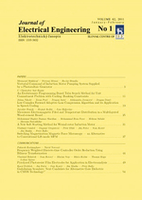
Journal of Electrical Engineering-Elektrotechnicky Casopis
Exploring the Frontiers of Electrical and Electronic Solutions.Journal of Electrical Engineering - Elektrotechnicky Casopis is a distinguished peer-reviewed journal published by Slovak University of Technology, dedicated to advancing the field of Electrical and Electronic Engineering. With an ISSN of 1335-3632, this journal aims to disseminate high-quality research findings, innovative methodologies, and significant technological advancements that contribute to the development of electrical engineering practices. Operating since 2004, it embraces an open-access model to enhance the visibility and accessibility of scholarly articles, thereby fostering knowledge exchange within the global research community. The journal holds a respectable Q3 categorization in the field, ranked 544 out of 797 in Scopus, indicating its growing influence within the discipline. Through rigorous peer-review processes, it provides a platform for researchers, professionals, and students alike to publish their work and stay informed on cutting-edge developments. Located in Bratislava, Slovakia, the journal is an essential resource for anyone involved in the rapidly evolving world of electrical engineering.

ELECTRICAL ENGINEERING
Exploring Breakthroughs in Electrical and Electronic EngineeringELECTRICAL ENGINEERING is a distinguished journal published by Springer that addresses the multifaceted challenges and advancements in the field of electrical and electronic engineering. With an impact factor that reflects its significance in the academic community, this journal offers vital insights into emerging technologies and groundbreaking research findings. Operating without open access, it provides a platform for rigorous peer-reviewed articles that span from applied mathematics to engineering disciplines. The journal has established a strong reputation, ranking in the Q2 category for Electrical and Electronic Engineering and Q3 for Applied Mathematics as of 2023, which showcases its commitment to high-quality research. The journal is indexed in Scopus, placing it within the 53rd to 71st percentiles in its respective categories. Researchers, professionals, and students alike will find ELECTRICAL ENGINEERING an invaluable resource for staying abreast of innovations and developments that shape the future of the electrical engineering landscape.